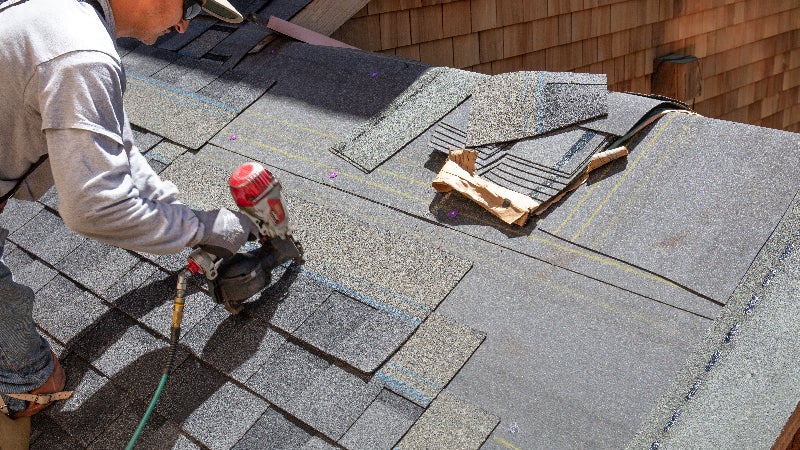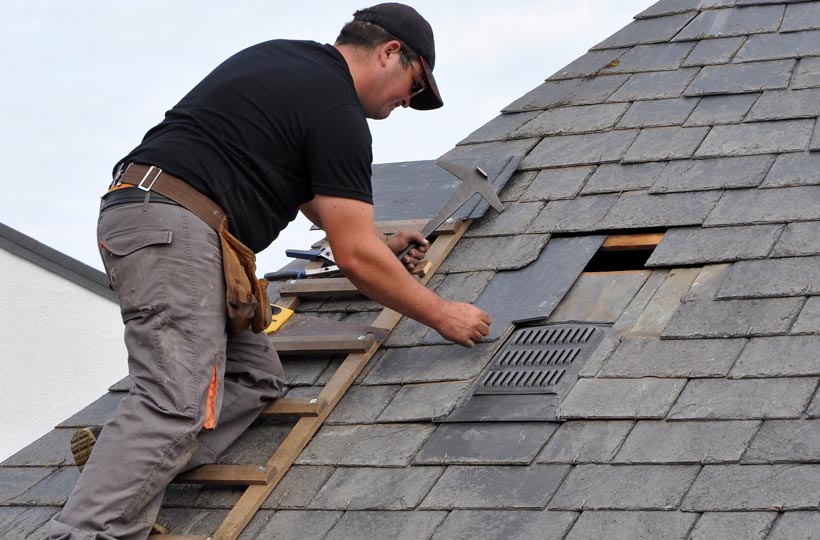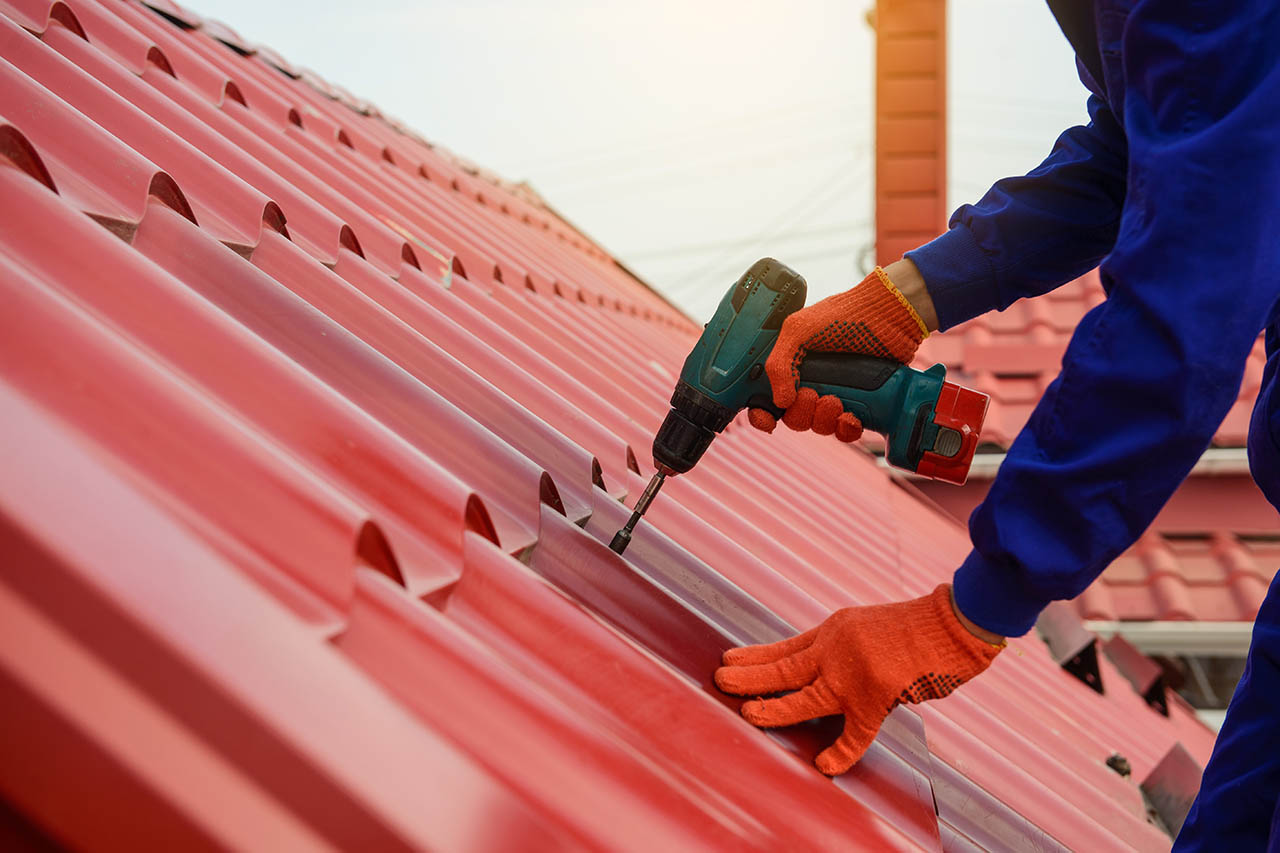Mastery in High Point Roofing: Unleash the Power of Expert Roofing Companies
Mastery in High Point Roofing: Unleash the Power of Expert Roofing Companies
Blog Article
Roof: A Comprehensive Overview to Roofing Basics
Roofing is an essential element of any building, offering protection versus the components and making sure the architectural honesty of a residential property. In "Roof: A Comprehensive Overview to Roofing Essential," we dive into the essential expertise needed to recognize and carry out effective roofing jobs. This overview covers a variety of subjects, including a summary of various roofing products, the benefits of each material, and the essential devices needed for roofing jobs. Furthermore, we check out the detailed process associated with roof covering, giving valuable insights right into proper installation techniques. We offer sensible suggestions for preserving and fixing your roof, lengthening its life-span and preventing costly damage. Whether you are a professional contractor or a house owner looking to boost your expertise, this overview is a beneficial source for mastering the fundamentals of roof.
Various Types of Roofing System Products
Choosing the ideal roof material is crucial, as it not only affects the visual appeals of a building however also plays a vital duty in protecting it from exterior aspects. One of the most preferred roofing materials is asphalt roof shingles. Each roof product has its own advantages and disadvantages, so it is vital to take into consideration elements such as maintenance, toughness, and expense needs before making a decision.

Benefits of Each Roofing Product
Each roof material supplies special advantages that make it appropriate for different applications and climates. When selecting the right roof product for a certain job., recognizing these advantages can help house owners and specialists make notified choices.
Asphalt roof shingles, for example, are among one of the most preferred roof products as a result of their cost, resilience, and ease of installation. They can be found in a range of designs and shades, making them flexible for any type of building style. Steel roofs, on the other hand, are known for their longevity and energy effectiveness. They can hold up against severe climate condition, such as high winds and heavy rainfall, while mirroring sunshine and minimizing cooling prices.
For those looking for an extra environmentally friendly option, there are roofing materials like clay tiles and slate. Slate roofing systems are not just visually pleasing yet additionally highly durable, with a lifespan of up to 100 years.
When it comes to flat roofings, EPDM (ethylene propylene diene terpolymer) rubber is a prominent option because of its adaptability, very easy installation, and resistance to UV rays and weathering. It is additionally affordable and needs minimal maintenance.
Crucial Tools for Roof Projects
Roof covering jobs call for a range of essential devices to guarantee reliable and successful installment or fixing. One of the most crucial devices is a roof covering nail gun, which allows for safe and quick add-on of tiles or other roof covering products.
A roof covering knife must have a sharp, resilient blade that can conveniently cut through various roof materials. Additionally, a roof covering shovel or tear-off device is necessary for eliminating broken or old roofing materials.

Steps Included in the Roofing Process
To start the roofing procedure, it is vital to initial examine the condition of the existing roof covering discover this info here and determine if any type of replacements or repair services are essential. This action is critical as it establishes the structure for the remainder of the roof covering task.
Once the assessment is complete, the following action is to prepare the roof for the installation or repair. This involves removing any kind of existing roof covering materials, such as old tiles or tiles, and getting rid of the location of particles. It is essential to ensure that the roof is free and clean from any obstructions prior to proceeding with the next steps.
After preparing the roof, the following action is to set up or fix the roof materials. This involves laying down the appropriate underlayment, such as roof covering really felt, and after that using the selected roofing product, such as tiles or tiles, according to the supplier's directions. It is necessary to adhere to the correct installment methods to guarantee a durable and water tight roof.
Ultimately, the last action in the roofing procedure is to conduct a last examination to make certain that the roofing system has been appropriately mounted or fixed. This involves monitoring for any damaged or loosened products, along with guaranteeing that all flashing and seals are safe and secure. roofing company High Point. It is vital to attend to any type of problems immediately to stop more damage or leaks
Tips for Keeping and Fixing Your Roof Covering
When keeping try these out and fixing your roofing, it is crucial to consistently inspect for any indicators of damages or wear. By conducting regular examinations, you can catch prospective issues beforehand and prevent them from escalating right into even more significant problems. Begin by examining your roof for any kind of loose or absent shingles, as these can leave your roofing susceptible to leakages and water damages. Furthermore, search for any type of signs of drooping or disproportion, as this might indicate structural damages that needs immediate attention.
In addition, evaluate your roofing for any kind of indicators of leakages or water spots on the ceiling or wall surfaces inside your home. These can be signs of a roofing leakage and need to be addressed immediately to stop additional damages. Pay attention to areas around vents, skylights, and chimneys, as these prevail locations for leaks to occur.
Frequently cleansing your roofing is another essential facet of maintenance. Eliminate any type of debris, such as branches or leaves, as they can trap moisture and bring about roofing system degeneration. Additionally, maintain downspouts and rain gutters clear to make sure proper water drainage and protect against water from pooling on your roofing system.
In terms of fixings, it is essential to address any kind of issues immediately to prevent additional damages. Small repair services, such as changing missing out on shingles or securing small leaks, can usually be done by property owners. However, for much more comprehensive repairs or if you are unsure of the degree of the damage, it is recommended to talk to a specialist professional roofer.
Conclusion

In "Roof covering: A Comprehensive Overview to Roof Fundamentals," we delve into the basic expertise required to recognize and implement successful roof covering jobs. One of the most crucial devices is a roofing nail gun, which allows for safe and quick attachment of roof shingles or other roofing materials. A roof covering knife must have a sharp, long lasting blade that can quickly cut through different roofing materials. Furthermore, a roof covering shovel or tear-off device is needed for getting rid of broken or old roof covering materials.After preparing the roofing system, the next action is to mount or repair the roof materials.
Report this page